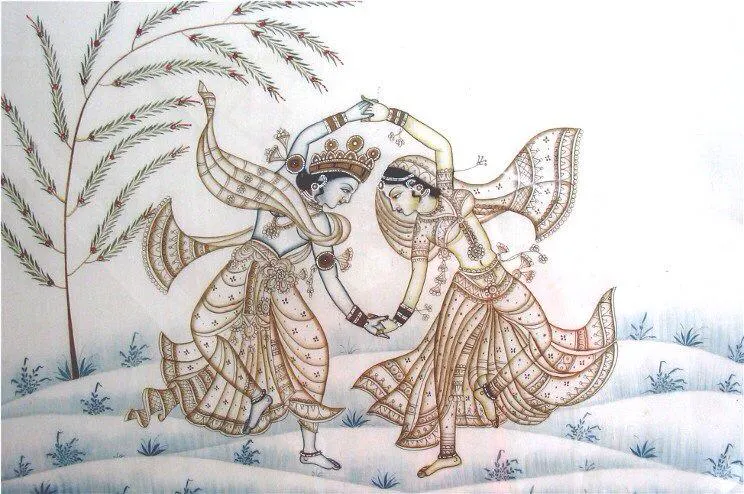The Eight Sāttvika-bhāvas in Rāgānugā-bhakti
According to Rūpa Gosvāmī in the Bhakti-rasāmṛta-sindhu (BRS), the sāttvika-bhāvas (also known as sāttvikas) are spontaneous, involuntary physical manifestations of deep spiritual emotion (bhāva or prema). They occur in the hearts of pure devotees, especially within rāgānugā-bhakti, where intense attachment (rāga) to Kṛṣṇa drives devotional expression.
These are not under the control of the devotee—they arise naturally when love of God deepens.

The 8 Classical Sāttvika-bhāvas (BRS 2.3.1–18)
Stambha (स्तम्भ) – Stupefaction / Immobility
The devotee becomes motionless, stunned by intense spiritual emotion. He is unable to speak, move, or act.
Example: Arjuna, when witnessing Kṛṣṇa’s universal form.Sveda (स्वेद) – Perspiration
Sudden, profuse sweating due to spiritual ecstasy, fear, or overwhelming bliss.
Romāñca (रोमाञ्च) – Horripilation (Goosebumps)
The body hairs stand on end, often due to awe, joy, or the sweetness of Kṛṣṇa’s presence.
Svarabhanga (स्वरभङ्ग) – Voice Faltering
The voice breaks, becomes choked, or fails altogether due to strong emotions.
Vepathu (वेपथु) – Trembling
Uncontrollable trembling of the body due to love, awe, or intense longing.
Vaivarṇya (वैवर्ण्य) – Color Change
The skin changes color—paleness from fear or separation, redness from embarrassment or ecstasy.
Aśru (अश्रु) – Tears
Tears flow uncontrollably, expressing deep love, sorrow in separation, or spiritual bliss.
Pralaya (प्रलय) – Fainting / Loss of Consciousness
The devotee loses external awareness—not from weakness, but from overwhelming emotion.
Viśvanātha Cakravartī Ṭhākura, in his Bhakti-rasāmṛta-sindhu-bindu, explains that these sāttvika-bhāvas manifest only in advanced stages, such as bhāva-bhakti or prema-bhakti, and cannot be imitated or artificially produced.
Why Sometimes 10 Are Listed
In certain texts or broader interpretations (especially in later Gauḍīya works), two additional expressions are sometimes included, though technically not part of the original 8 sāttvika-bhāvas.
Unmāda (उन्माद) – Divine Madness
The devotee appears “mad” to the world—speaking with trees, crying to animals, dancing in the street. But inwardly, they are fully absorbed in Kṛṣṇa.
Śrī Caitanya Mahāprabhu often exhibited this during his later līlās in Jagannātha Purī.Nirveda (निर्वेद) – Spiritual Despondency / Intense Humility
A feeling of unworthiness, deep remorse, or detachment from worldly things, born from the vision of one’s own limitations in loving Kṛṣṇa.
These two are technically classified as vyabhicārī-bhāvas (transitory emotions), not sāttvika-bhāvas proper. But due to their powerful manifestation in rasa, they are sometimes mentioned in the same context.
Summary
The sāttvika-bhāvas are involuntary physical expressions of the most elevated forms of love for Kṛṣṇa. In rāgānugā-bhakti, where the devotee follows the moods of the eternal residents of Vraja (like Śrī Rādhā, Yaśodā, or the gopas), these bhāvas naturally manifest as one becomes absorbed in divine emotions.
They are signs of genuine spiritual realization, not performance or practice. When even one of these appears in a sādhaka’s life, it is considered a rare blessing.


